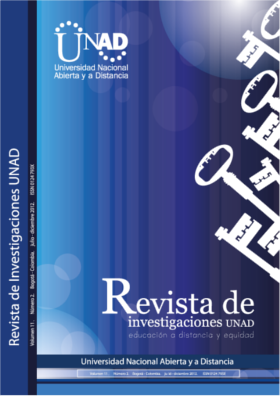Cuando la REVISTA DE INVESTIGACIONES UNAD recibe la postulación de un original por parte de su autor, ya sea a través de correo electrónico o postal, considera que puede publicarse en formatos físicos y/o electrónicos y facilitar su inclusión en bases de datos, hemerotecas y demás sistemas y procesos de indexación. REVISTA DE INVESTIGACIONES UNAD autoriza la reproducción y citación del material de la revista, siempre y cuando se indique de manera explícita el nombre de la revista, los autores, el título del artículo, volumen, número y páginas. Las ideas y conceptos expresados en los artículos son responsabilidad de los autores y en ningún caso reflejan las políticas institucionales de la UNAD
Learning by doing in research as a learning strategy
This was a research conducted during the development of two academic terms with the participation of 128 students. Its aim was to analyze the methodology of learning by doing, as an alternative active learning, as well as to systematize and to feedback this process at the National Open and Distance Education Institute —UNAD— , during first academic period 2011. The categories of analysis and their articulation with research lines were selected by an inductive method. As a result of this research process, 43 routes and 55 research projects were systematically organized, through validation and collective construction confirming the efficiency of the proposed methodology and the increasing importance of research by teachers on their own teaching practice. Thus, the category in which the largest number of research proposals are inscribed is the implementation of teaching strategies with Web 2.0 and Web 3.0, intended to optimize educational practices and to incorporate information and communication technologies, TIC’s in classrooms.




